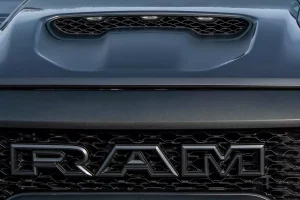Problems with your car can make you tense, especially if your wallet is too thin to have it professionally repaired, but for most auto-related issues, it is possible to do much of the repair work yourself.
Some car-repair jobs are good DIY projects, like changing the brake pads and saving hundreds of dollars. However, some are best left to professional renegades.
Battery
A flat battery might make you slow down. Too long left on, or not regularly driven, the voltage in a car battery can drop until the engine won’t start at all. Since you can easily change your car battery at home, and it’s cheap (a battery charger is all you need), it simply means you have to jump start it or your car. Put on leather gloves and safety goggles before any work, and clean all the corrosion from the battery terminals with a special automobile-grade corrosion remover spray or with a baking soda and water solution. And remember, always disconnect negative cable before connecting the positive.
Tires
No driver escapes the need to repair or replace a punctured tyre at some time or another. Puncture repair is a relatively simple procedure that can be effectively carried out at home with a bit of patience and time, and hardly any specialized tools. First, start by loosening the wheel. With the tire out of the way, it should be an obvious matter of seeing (and judging) the damage from any nail punctures; use a rubber plug with lubricant first, then insert into the puncture to get as tight a seal as possible to make sure it doesn’t leak. After that, inflate your tyres to the pounds per square inch that the manufacturer suggests (there’s a label for that in your driver’s door jamb). And check them regularly, because ambient temperature changes may require a fluctuations in that number.
Timing Belt or Chain
An engine out of time (such as one with a broken timing belt or chain) is critical and needs to be attending to once the vehicle is on the highway. And the good news is that this fix is pretty basic, and cheap. It only requires a basic DIY car mechanic, and replacements are pretty inexpensive. Plus, most cars come with the same basic set of tools in their trunk, so it’s just a way to get on the road again. Siphon out your car’s coolant, remove whatever hoses or parts are covering the serpentine belt access panel, remove your old belt, clean the cover – maybe you need some degreaser for this – and then determine if your engine is an interference motor; it could have bent a couple of valves if it broke while running.
Engine
There might be many lessons to be learnt from DIY car repair. However, it’s better left to the pros when it comes to engines. Modern engines are designed with impeccable tolerances; a slight mistake might lead the other systems to function incorrectly or cause additional damage. In addition, you could end up invalidating your warranty or your insurance claim, and run out of time to complete the task, requiring you to invest in specialist tools and parts. If you have it serviced professionally, repair shops’ peace-of-mind insurance might be better than what you can get from a DIY project. In the era of live-for-today attitudes, and an epidemic such as coronavirus, where families are struggling financially and unable to make ends meet, drive your automobile to a place such as ProAuto instead.
Electrical
A good electrical car wiring system keeps your car safe, allowing the lights, radio and other things to work as they should, while enabling the engine and other accessories to function well. When lights flicker or don’t work or something else goes wrong in a circuit, it is usually due to a blown fuse. Replacing the fuse is a simple process: check the listing for the circuit that was affected and find a fuse puller and tester that matches the amperage of your replacement, take out the old fuse, and put in a new one. The wiring of a car is crucial for keeping it moving, so you have to keep checking it regularly and have any damage repaired immediately. Visual inspection, resistance and continuity tests, the use of suitable personal protective equipment, including insulated gloves and safety goggles, will allow you to identify any problems that might arise quicker.







More Stories
Auto Repair App
How to Get an Auto Repair Estimate
What Is Auto Repair?